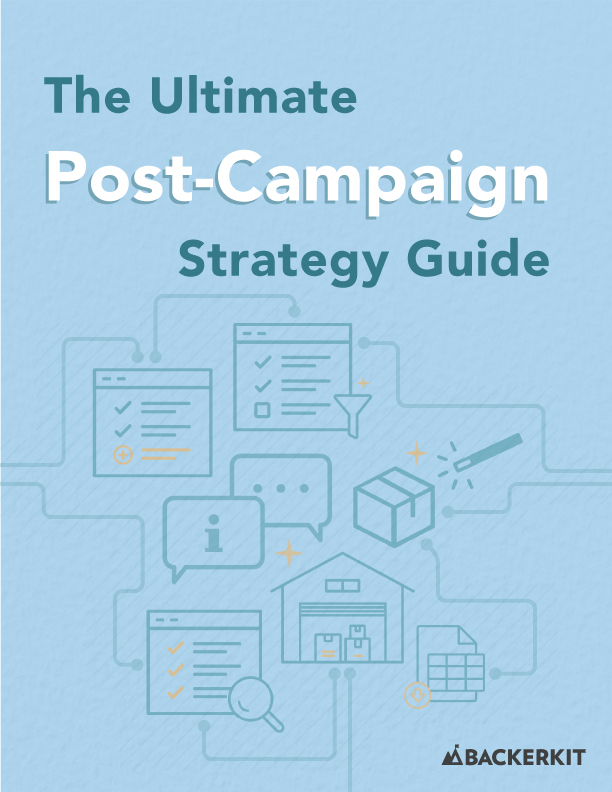An add-on is an optional item that can be added to a Kickstarter pledge without changing pledge levels. In the early days of crowdfunding, add-ons were extremely common in tabletop games, where creators typically offer them in the form of extra cards, expansion packs, and components. Since then, add-ons have become popular for projects in all sorts of categories.
Think add-ons are irrelevant to your campaign?
Think again.
Jamey Stegmaier of Stonemaier Games recounts his experience crowdfunding tabletop game Viticulture on his blog. He initially believed that add-ons were “clutter” – unnecessary items that distracted from the main product – but recalls that backers would ask why his campaign didn’t have add-ons.
He soon changed his tune. “Some backers want more stuff, so you should give them an opportunity to get that stuff and support you in the process,” he writes. And then there’s a clear financial benefit, too. “We had the $65,000 stretch goal in sight, and so existing backers started adding more stuff to their pledge to help us get there.”
Testing Demand with Add-ons
Add-ons let backers to snap up what they missed during the initial campaign, or to pick and choose additional items that are outside their pledge level. From a business perspective, they’re justified: it’s easier to sell to an existing customer than a new one. Your backers are a captive audience. Sometimes, like in Stegmaier’s case, they can be so successful they unlock a campaign stretch goal.
Some creators use add-on as a tool for gauging market validation. Gareth Everard, the creator behind Rockwell Razors, used add-ons in BackerKit to “test demand for different products before proceeding with full production”.
“We make razors on Kickstarter, but the gamut of men’s grooming products spans a bit wider,” Everard says. He wanted to see whether it was worth selling a full suite of men’s grooming products and accessories.
“We used add-ons like Kickstarter, but of course we weren’t going to launch combs and shaving creams on their own KS campaign,” Everard says. “The great news was that we were able to see demand for every single product except for one.
“We’re able to test and pre-sell thousands of these products, so it’s a win-win for everyone.”
Once add-ons for the Rockwell Razor Model T campaign have shipped, he plans to offer these products on the company’s Shopify store.
What Makes a Good Add-On Item?
Ideally, add-ons should be relevant to a crowdfunding campaign’s core product. They might enhance the original product in some way, or are a limited-edition item that isn’t offered in any pledge level.
For Everard, he chose add-ons that aligned with his aim for providing a “fuller, more complete range of men’s grooming products to add more value for people who are interested in upgrading their grooming routine”.
His campaign for the Rockwell Razor Model offered add-ons such as shaving cream, post-shave balm, beard oils, and beard conditioner, as well as additional hardware like beard brushes and folding combs.
When deciding which items to offer, be sure to factor in shipping costs (particularly if you are shipping physical items separately from pledge rewards; whether the item can be easily produced in bulk; and what value it offers to backers.
Budgeting and Pricing Add-ons
“There are a lot of production costs associated with the razors, but fortunately we have an existing product, the Rockwell 6S, which is revenue-generating,” Everard says.
“The minimum orders for consumables are much, much lower than new custom razors,” he says. This meant that there were lower upfront costs for add-ons, which were easily covered by the cash-flow from Everard’s existing business.
Everard says he determines pricing for add-ons by researching market trends and evaluating the offerings of competitors.“We have a consistent, across-the-board pricing strategy so that we can afford to go direct to the consumer, wholesale, and sell to our international distributors but still offer a very competitive direct-to-consumer price.”
Keeping Backers Satisfied
Everard says his first Kickstarter campaign for the Rockwell Razor was “crazy”. Things didn’t quite go to plan. As he wrote in a blog post for VentureBeat, significant manufacturing quality issues derailed the initial success of the campaign. “It was at this time that we discovered the error of our ways,” he wrote.
“Having not visited the factory during production, and having not assembled, quality controlled, and shipped the razors ourselves, we’d never taken a close look at the full production product — we’d just assumed everything would be great. So we deserved every moment of Kickstarter fury that was about to follow.”
Determined to rectify the situation, Everard “went all in with his personal savings to ship out a replacement razor to all of our backers for free”. It was a costly move, but it worked: he says backers were “quite loyal because of our significant effort to get it right”.
Doing right by backers in the first campaign led to two more successful Kickstarter campaigns, and made an engaged, supportive base of backers more willing to buy additional products.

